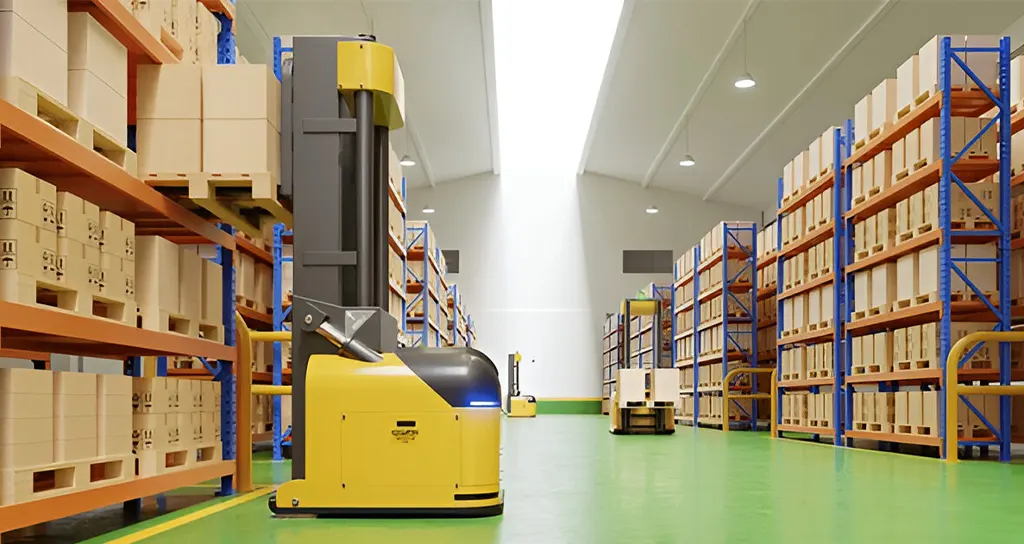First Fulfillment Services with 20% Off
Sign up today and save 20% on your first order. Fast, affordable, tax-free Amazon prep fulfillment.
Efficient warehouse material handling is crucial for businesses aiming to improve productivity, reduce costs, and ensure workplace safety. Proper handling techniques streamline operations, minimize damage, and enhance supply chain efficiency. Whether you’re managing heavy equipment, fragile goods, or bulk inventory, adopting best practices in warehouse material handling is essential for operational success.

A well-organized warehouse layout plays a vital role in handling materials effectively. Key strategies include:
Designate specific areas for receiving, storage, packing, and shipping to streamline workflow.
Ensure aisles are wide enough for forklifts and pallet jacks to move freely.
Store frequently accessed materials near shipping docks for quicker retrieval.
Install shelving and racks to maximize storage capacity while keeping materials accessible.
Using the right equipment improves efficiency and safety. Some essential tools include:
Ideal for lifting and transporting heavy loads.
Automate material movement to speed up order fulfillment.
Reduce human errors and optimize inventory management.
Used for handling oversized or heavy materials safely.
Warehouse safety should always be a top priority. Best practices include:
Train employees on proper lifting techniques and equipment usage.
Provide gloves, helmets, and safety shoes to prevent injuries.
Use warning signs and floor markings to guide workers and minimize hazards.
Establish protocols for fire, chemical spills, or medical emergencies.
Proper inventory management prevents overstocking, understocking, and material waste. Best practices include:
Use barcode scanning or RFID technology to monitor inventory movement.
Follow First-In-First-Out (FIFO) or Last-In-First-Out (LIFO) strategies based on product type.
Conduct regular checks to identify discrepancies and ensure accuracy.
Implement software to optimize order processing and stock control.
Order fulfillment efficiency directly impacts customer satisfaction. Improve these processes by:
Group multiple orders with similar items to reduce travel time.
Assign specific areas to workers for faster material retrieval.
Use scanning systems to quickly identify and package orders.
Inspect materials before shipping to prevent returns and complaints.

Warehouse workers handle materials daily, so ensuring a comfortable and safe work environment is essential.
Reduce strain by setting up workstations at ergonomic heights.
Minimize physical exertion when handling heavy items.
Prevent fatigue by scheduling regular breaks for workers.
Teach proper lifting techniques and warehouse best practices to improve efficiency.
Advanced technology solutions enhance warehouse operations. Consider:
Optimize inventory flow and demand forecasting.
Track environmental conditions such as temperature and humidity for sensitive materials.
Speed up stocktaking and inventory tracking.
Reduce manual labor and improve precision in warehouse navigation.
Warehouse operations should evolve with changing industry standards. Regular assessments and improvements ensure long-term success.
Track KPIs such as order accuracy, fulfillment speed, and return rates.
Involve workers in identifying inefficiencies and suggesting improvements.
Stay updated on new technologies and best practices to remain competitive.
Mastering warehouse material handling is key to a smooth and efficient supply chain. By optimizing warehouse layout, investing in the right equipment, prioritizing safety, and leveraging technology, businesses can enhance productivity and reduce costs. Implementing best practices ensures a safe working environment, minimizes errors, and boosts overall efficiency. A well-structured warehouse is the backbone of any successful logistics operation, setting the foundation for long-term growth and customer satisfaction.
Efficient warehouse material handling improves productivity, reduces operational costs, ensures workplace safety, and strengthens the overall supply chain, leading to better customer satisfaction and long-term business growth.
Best practices include creating designated zones for receiving and shipping, maintaining clear and wide pathways for equipment, strategically placing high-demand items, and using vertical space with shelves and racks to maximize storage.
Essential warehouse equipment includes forklifts, pallet jacks, conveyor belts, automated storage and retrieval systems (AS/RS), cranes, and hoists to safely and efficiently move materials.
Technology like AI, IoT sensors, warehouse management systems (WMS), drones for inventory management, and automated guided vehicles (AGVs) can optimize inventory tracking, enhance safety, and streamline order fulfillment processes.
Key safety practices involve regular employee training, using protective gear, installing clear signage and floor markings, and establishing emergency protocols for incidents like fires or chemical spills.

Need efficient logistics? We offer hassle-free shipping, warehousing, and supply chain solutions to ensure safe, on-time delivery!

Sign up today and save 20% on your first order. Fast, affordable, tax-free Amazon prep fulfillment.